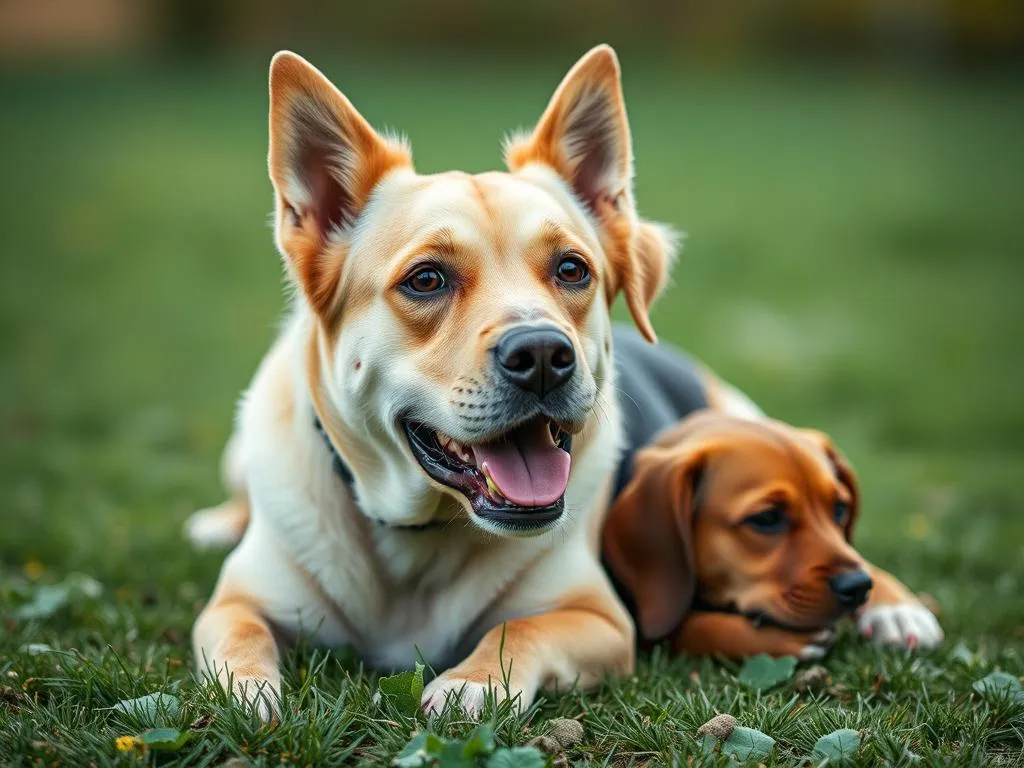
Divorce can be a tumultuous time not just for the individuals involved, but also for their beloved pets. Dogs, in particular, are sensitive creatures that thrive on routine, stability, and the comfort of their human companions. Understanding how to help dogs adapt to a divorce is crucial for their emotional well-being. Addressing their needs during this transition will not only support their mental health but also help maintain a strong bond between you and your furry friend.
Understanding the Impact of Divorce on Dogs
Emotional Signs of Stress in Dogs
When faced with the upheaval of divorce, dogs can exhibit various emotional signs of stress. Changes in behavior may include increased barking, aggression, or withdrawal. You might notice your dog becoming more clingy or, conversely, more distant. Physical signs can also manifest, such as fluctuations in appetite or lethargy. Some dogs may become destructive, chewing on furniture or other household items out of anxiety.
Being attuned to these signs is the first step in ensuring your dog’s comfort. If you notice a sudden change in your dog’s behavior or habits, it may be a response to the stress of the situation.
The Bond Between Dogs and Their Owners
The bond between dogs and their owners is rooted in attachment theory. Dogs are naturally inclined to form strong attachments to their caregivers, and disruptions in the household can severely affect their sense of security. During a divorce, the changes in daily routines, living arrangements, and even emotional climates can be overwhelming for them. Understanding this bond is essential to navigating the challenges ahead.
Preparing for the Transition
Assessing the Living Situation
One of the first steps in helping dogs adapt to a divorce involves assessing the living situation. If feasible, maintaining a stable environment for your dog is vital. If you’re moving out, try to keep some elements of your dog’s environment consistent. This may include familiar furniture or even the placement of their food and water bowls.
Creating a safe space for your dog during this transition is also important. Designate a quiet area where your dog can retreat when feeling anxious. This space should include their favorite toys, bedding, and items that carry their scent to provide comfort.
Communication with Your Ex-Partner
Discussing pet custody and responsibilities with your ex-partner is critical. Open communication can prevent misunderstandings and ensure both parties are on the same page regarding the dog’s care. It’s essential to agree on who will take care of the dog during transitions and what each person’s responsibilities will be. This cooperative co-parenting approach can minimize stress for both the dog and the owners.
Maintaining Routine and Stability
Establishing a Consistent Schedule
One of the most effective ways to help your dog adapt is by establishing a consistent schedule. Dogs thrive on routine, and a stable daily schedule can bring a sense of normalcy amidst the chaos. Make it a priority to maintain regular feeding, walking, and playtime routines.
Consider creating a daily schedule that includes specific times for walks, meals, and play. This will not only help your dog feel secure but also ensure they receive the physical and mental stimulation they need.
Keeping Familiar Items and Spaces
Familiar items and spaces play a crucial role in providing comfort for your dog. Retaining their favorite toys, blankets, and bedding can help ground them in a familiar environment. Even small changes can be disorienting for dogs, so aim to keep their environment as similar as possible to what they were accustomed to before the divorce.
If you are moving, make sure to unpack their belongings first. Setting up their space right away can help ease the transition into a new home.
Providing Emotional Support
Spending Quality Time Together
Quality time is essential in helping your dog adjust. Engage in bonding activities that you both enjoy, such as walks, fetch, or cuddling on the couch. Dogs are social animals and appreciate spending time with their owners. These activities can help reinforce your bond and provide emotional support during this challenging time.
Consider introducing new activities to keep things interesting and engaging for your dog. This could include trying out new parks, learning new tricks, or even enrolling in a dog training class together. The key is to focus on positive interactions that will help your dog feel loved and secure.
Recognizing Signs of Anxiety
As you navigate this transition, it’s important to be vigilant in recognizing signs of anxiety in your dog. Some common triggers can include loud noises, unfamiliar environments, or changes in routine. By identifying these triggers, you can take proactive steps to manage your dog’s anxiety.
Utilize calming techniques such as interactive toys, puzzle games, or even calming music to create a soothing atmosphere. Training your dog with positive reinforcement techniques can also help them cope with anxiety and build their confidence.
Seeking Professional Help
When to Consult a Veterinarian
If your dog’s behavior becomes concerning or if you notice significant changes in their health, it may be time to consult a veterinarian. Signs that may indicate a need for professional advice include severe anxiety, aggression, or changes in appetite. Discussing medication or behavioral therapy options with your vet can provide additional support for your dog during this adjustment period.
Considering Dog Trainers or Behaviorists
In some cases, it may be beneficial to seek help from a professional dog trainer or behaviorist. This is especially true if your dog is displaying persistent anxiety or behavioral issues. Trainers can provide specialized strategies to manage your dog’s behavior and help them adapt to new situations effectively.
Behavioral therapy may also be a useful resource for addressing anxiety and stress. Many trainers and behaviorists specialize in helping dogs cope with life changes, making them invaluable partners in your journey to help your dog adjust.
Adjusting to New Living Arrangements
Moving to a New Home
Moving can be particularly challenging for dogs. To help your dog adapt to a new environment, be patient and allow them to explore at their own pace. Creating a welcoming space in the new home can make a significant difference. Set up their area with familiar items, and allow them to feel safe and comfortable in their new surroundings.
Give your dog plenty of time to adjust to the new smells and sounds. Gradually introduce them to different areas of the home, and supervise their exploration to ensure they feel secure.
Introducing New People or Pets
If you plan to introduce new people or pets into your life, it’s important to manage these introductions carefully. Gradual integration is key; start by allowing your dog to meet new individuals or pets in a controlled environment. Positive reinforcement during these introductions can help alleviate stress and create a more relaxed atmosphere.
Monitor your dog’s behavior and be prepared to intervene if they show signs of anxiety or aggression. Creating a positive experience during these introductions will help your dog feel more comfortable with changes in their social circle.
Conclusion
Navigating a divorce is challenging for everyone involved, including your beloved dog. By understanding how to help dogs adapt to a divorce, you can provide your furry friend with the support they need during this difficult transition. Remember to be patient and attentive to their needs, maintain routines, and offer plenty of emotional support.
The bond you share with your dog is invaluable, and with care and consideration, you can help them find stability and comfort in a new chapter of life. Your dedication to their well-being will not only ease their anxiety but also strengthen the bond you share, ensuring that they continue to thrive despite the changes around them.









